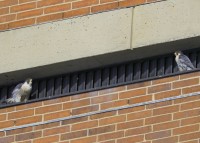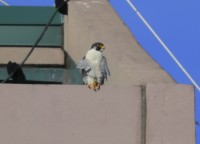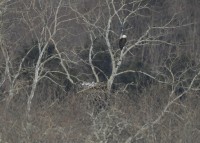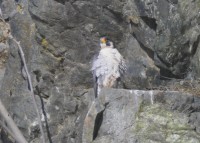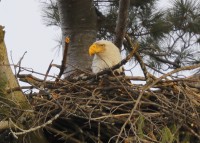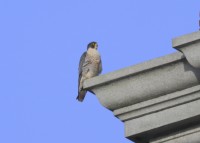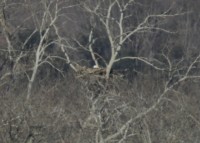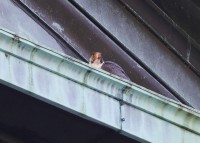Lawrence Peregrines: ready to drop eggs!
March 16, 2017 in Verizon Cell Tower
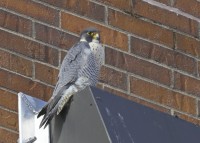 The sun was shining bright this morning with clear skies and moderate winds. After a quick look around the Clock Tower, and in light of cold temps in the twenties, and lower with wind chill, made a run over to the Verizon Cell Tower. Sure enough, up on the sixth floor ledge along the hot air exhaust vents, were both peregrines. The female seemed to be trying to get the attention of the male, but he displayed a clear indifference. So after ten minutes of walking back and forth along the ledge, she took a powder and flew around to the east side of the building to an awning over a pair of larger vents, and perched herself in the sun and out of the wind! Nice seeing them somewhat close together….
The sun was shining bright this morning with clear skies and moderate winds. After a quick look around the Clock Tower, and in light of cold temps in the twenties, and lower with wind chill, made a run over to the Verizon Cell Tower. Sure enough, up on the sixth floor ledge along the hot air exhaust vents, were both peregrines. The female seemed to be trying to get the attention of the male, but he displayed a clear indifference. So after ten minutes of walking back and forth along the ledge, she took a powder and flew around to the east side of the building to an awning over a pair of larger vents, and perched herself in the sun and out of the wind! Nice seeing them somewhat close together….
